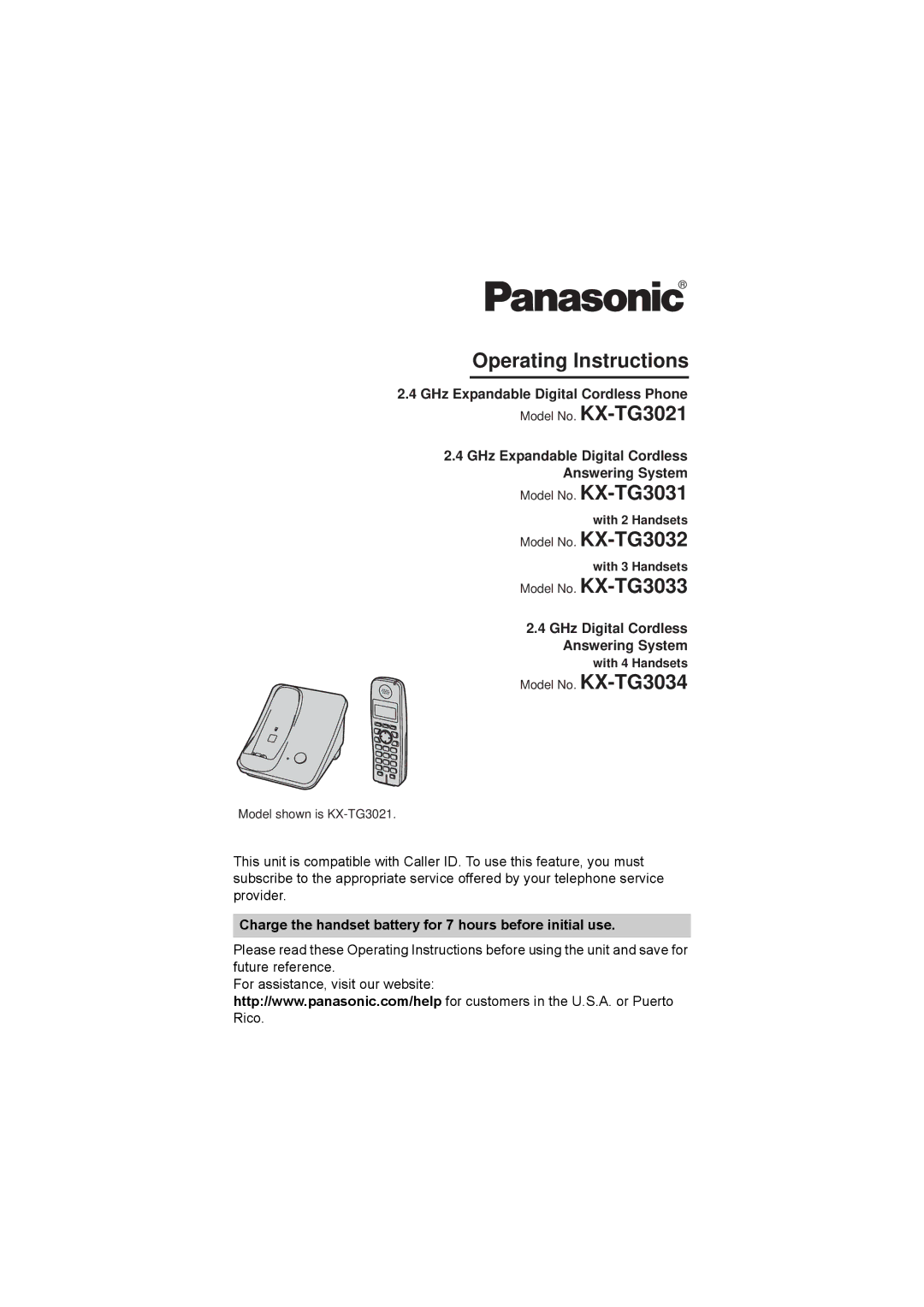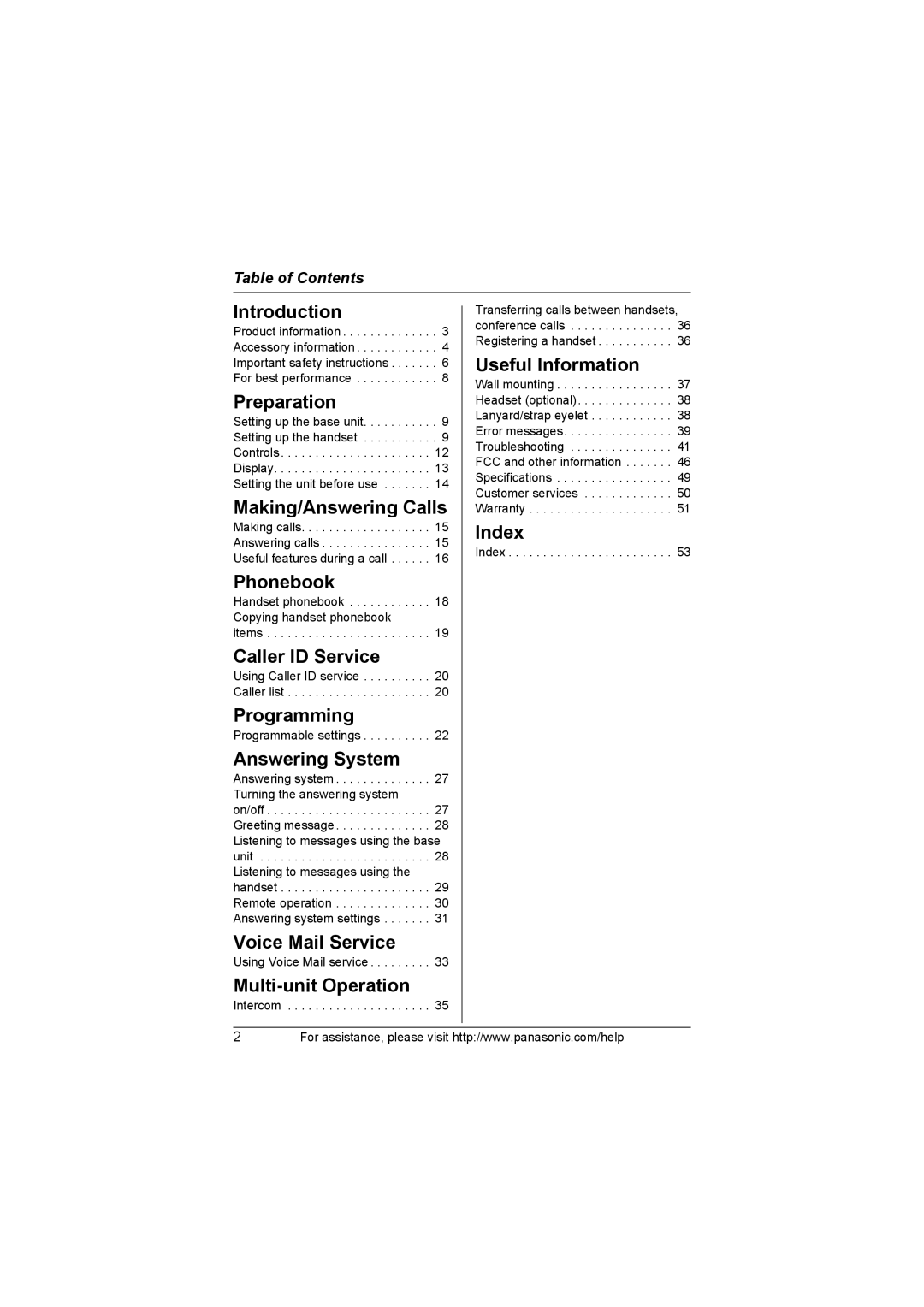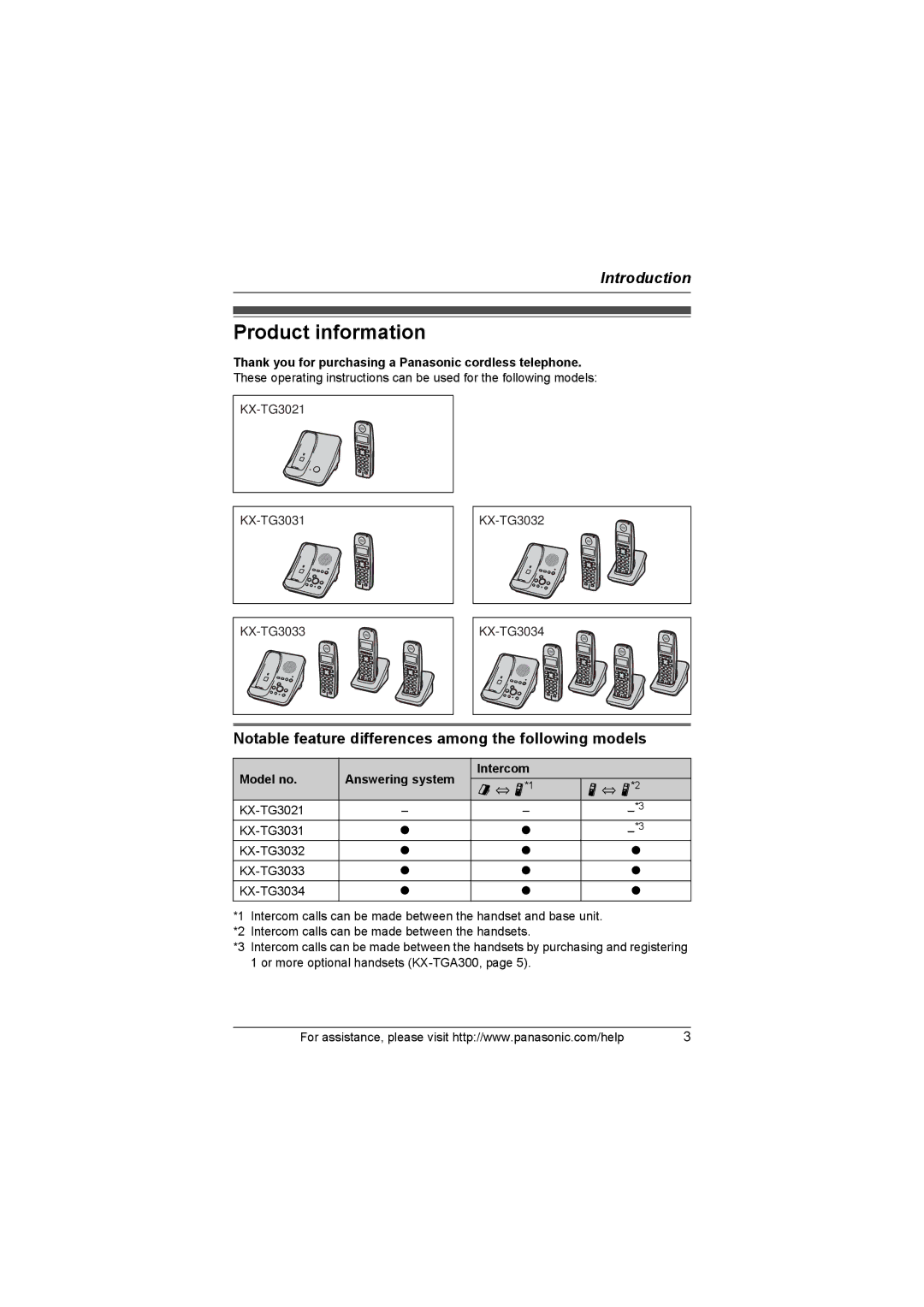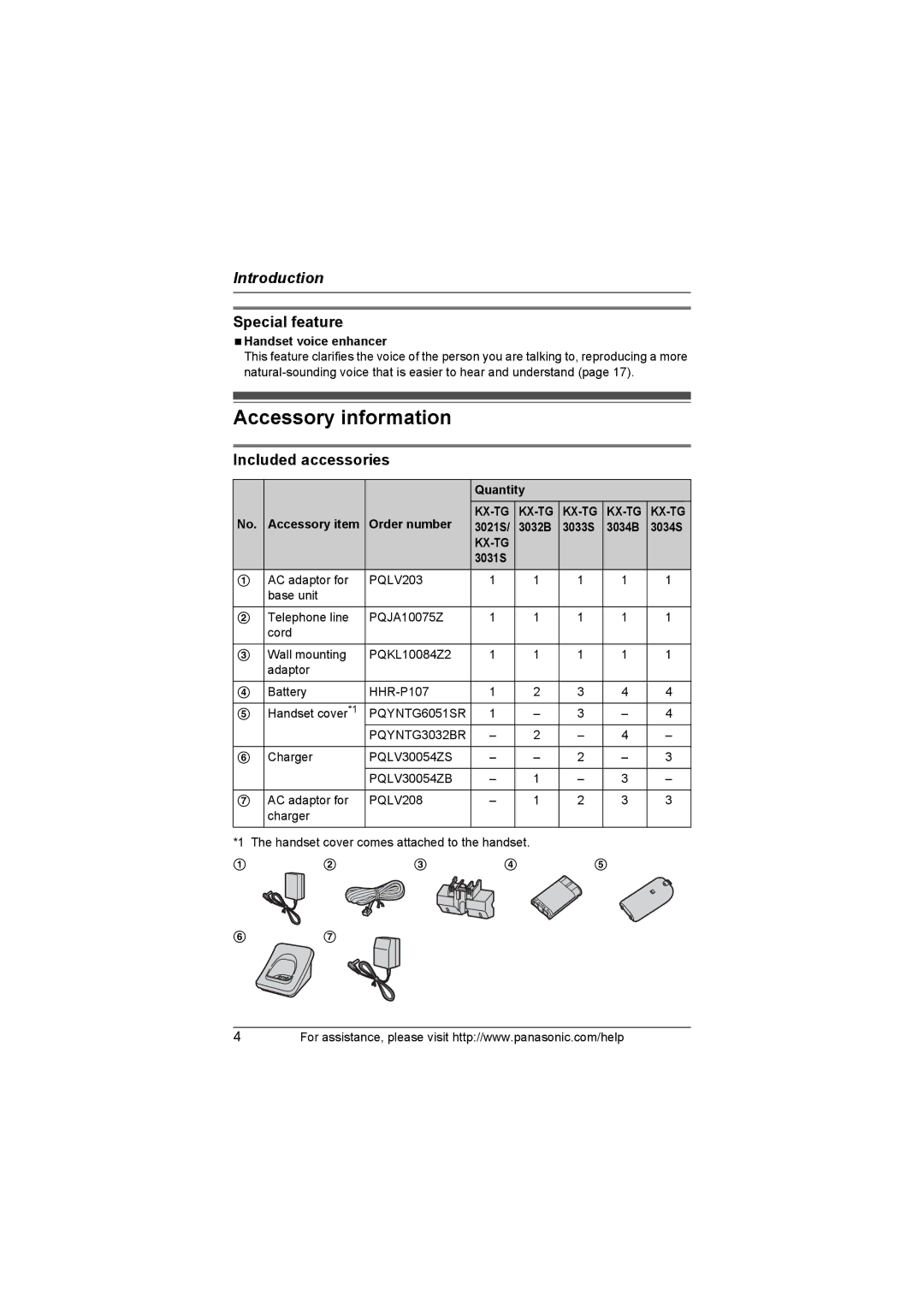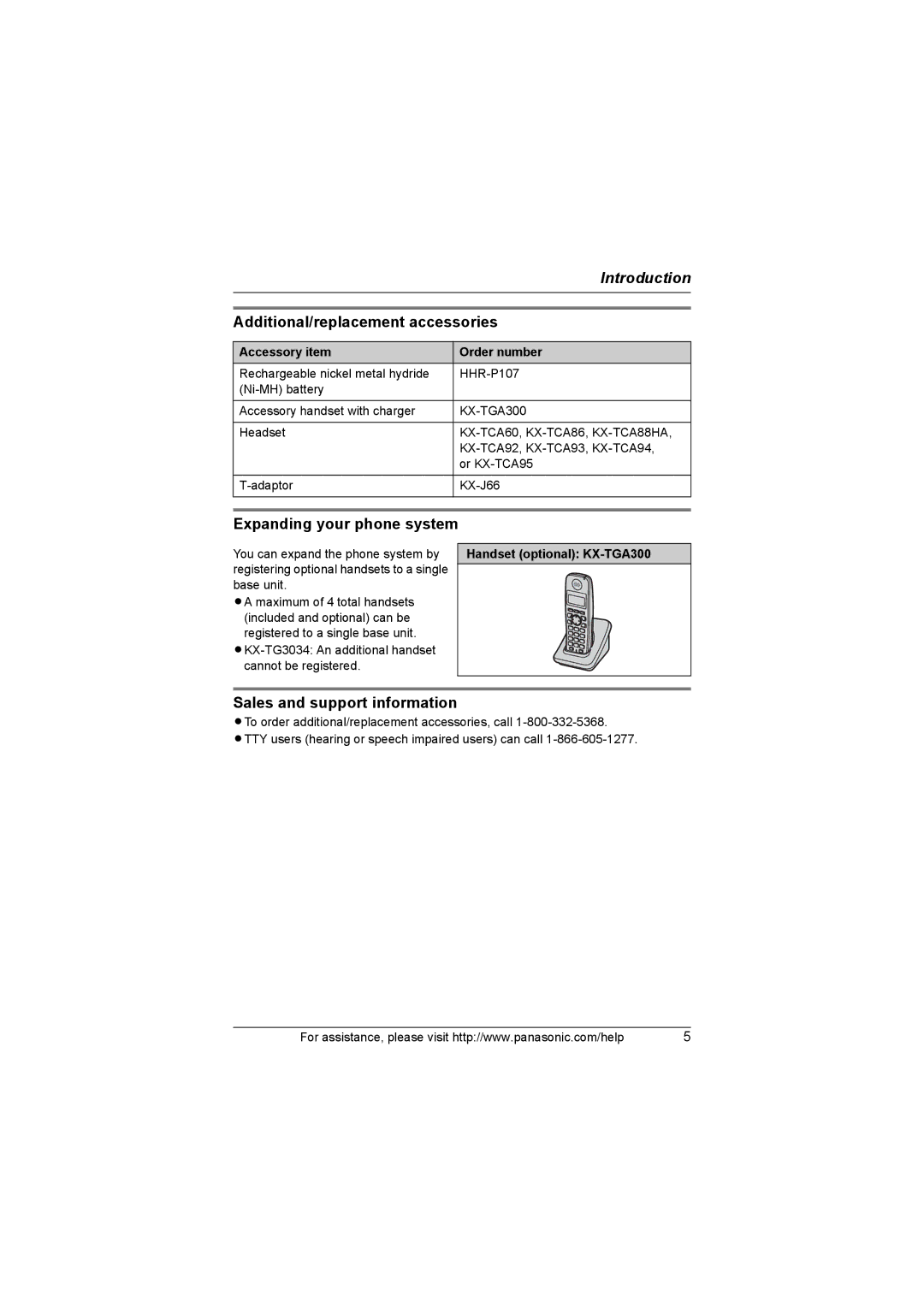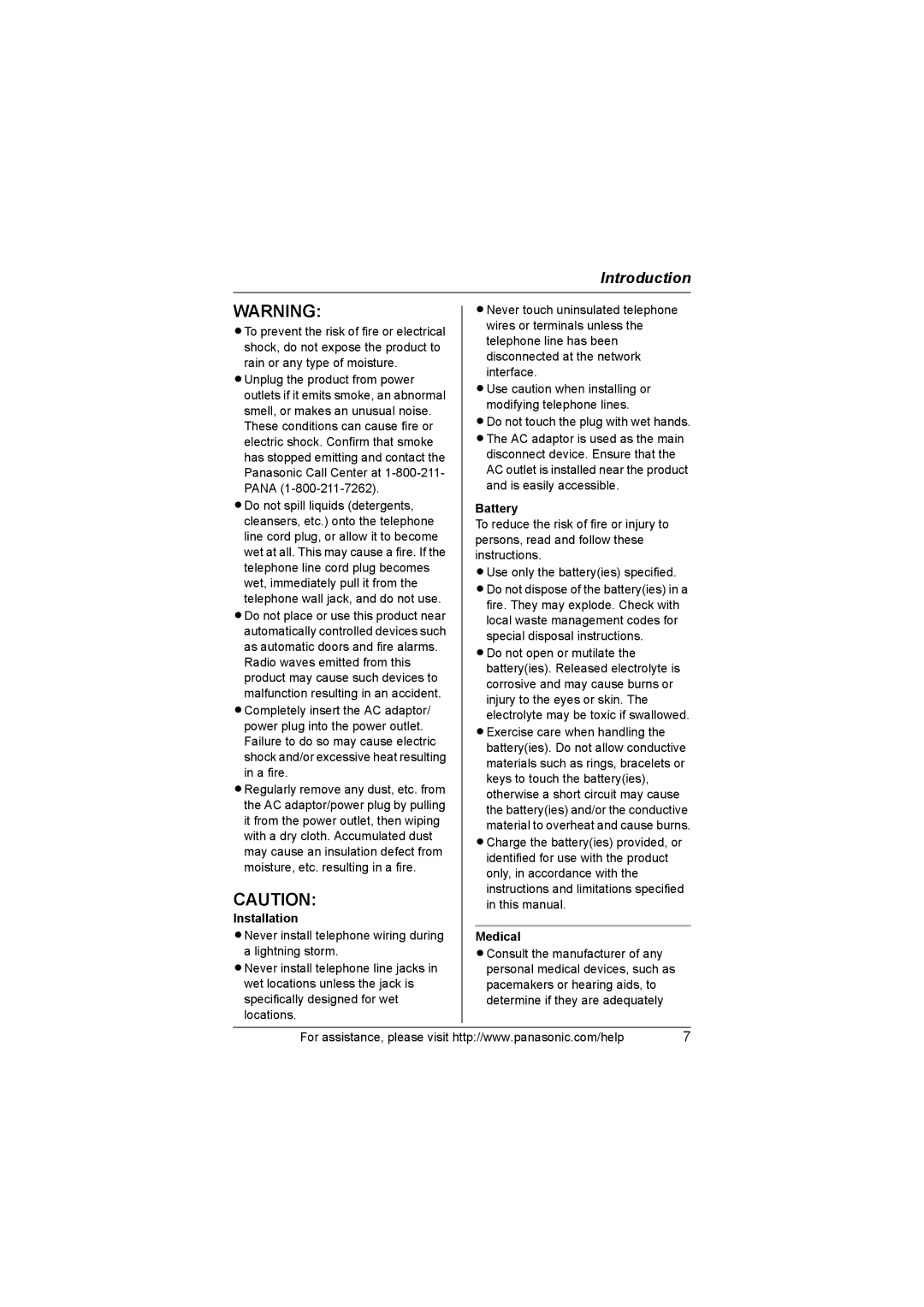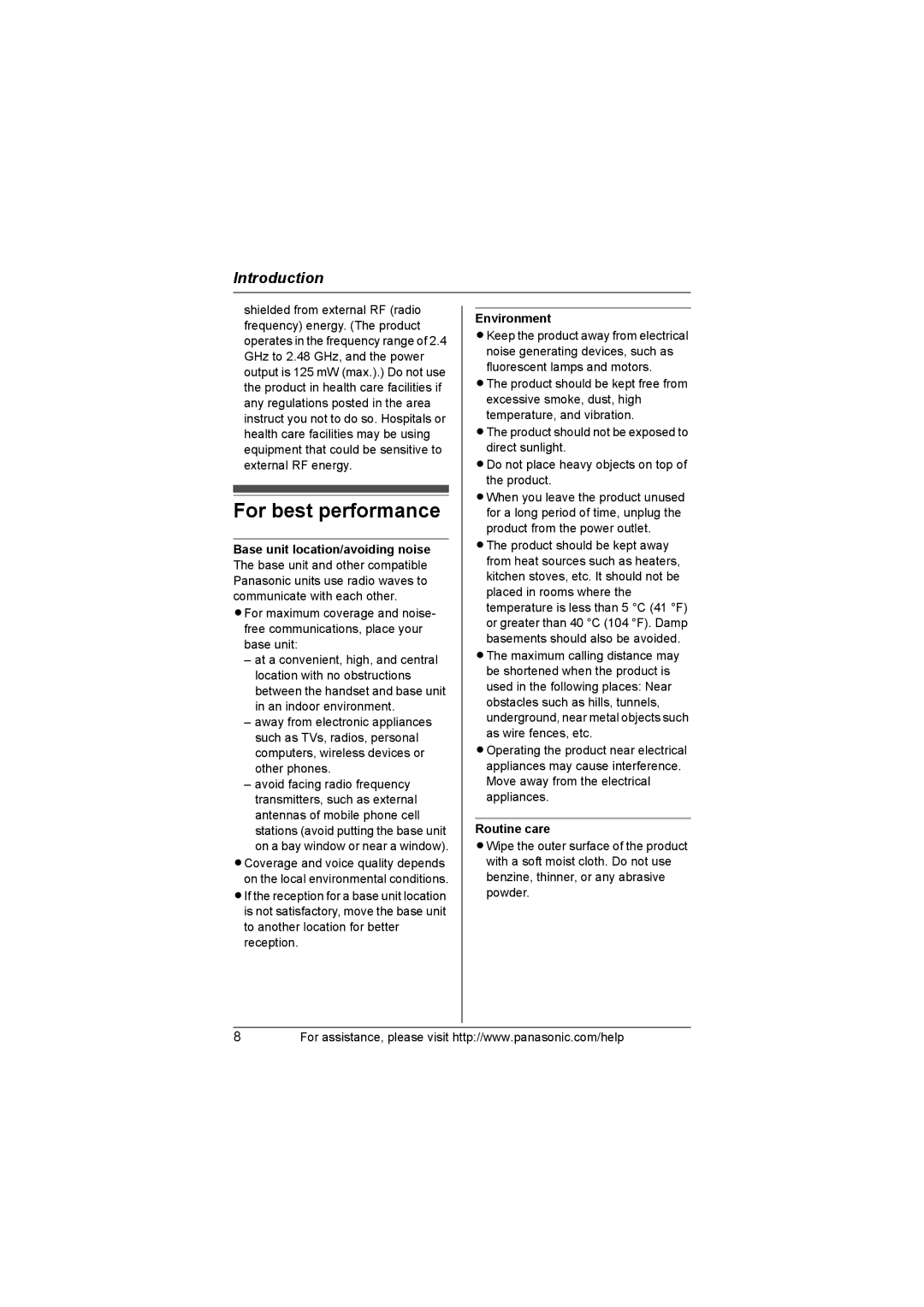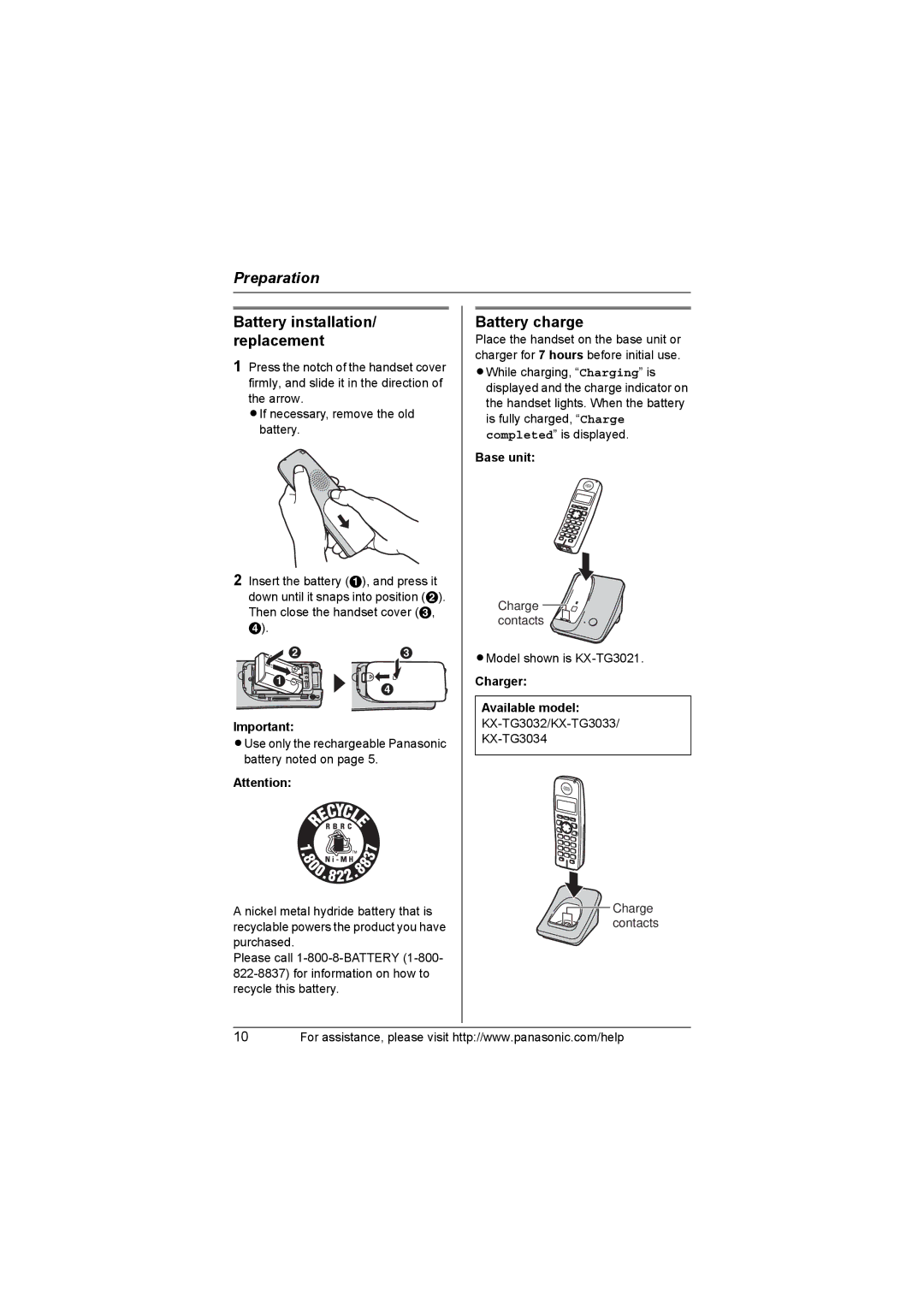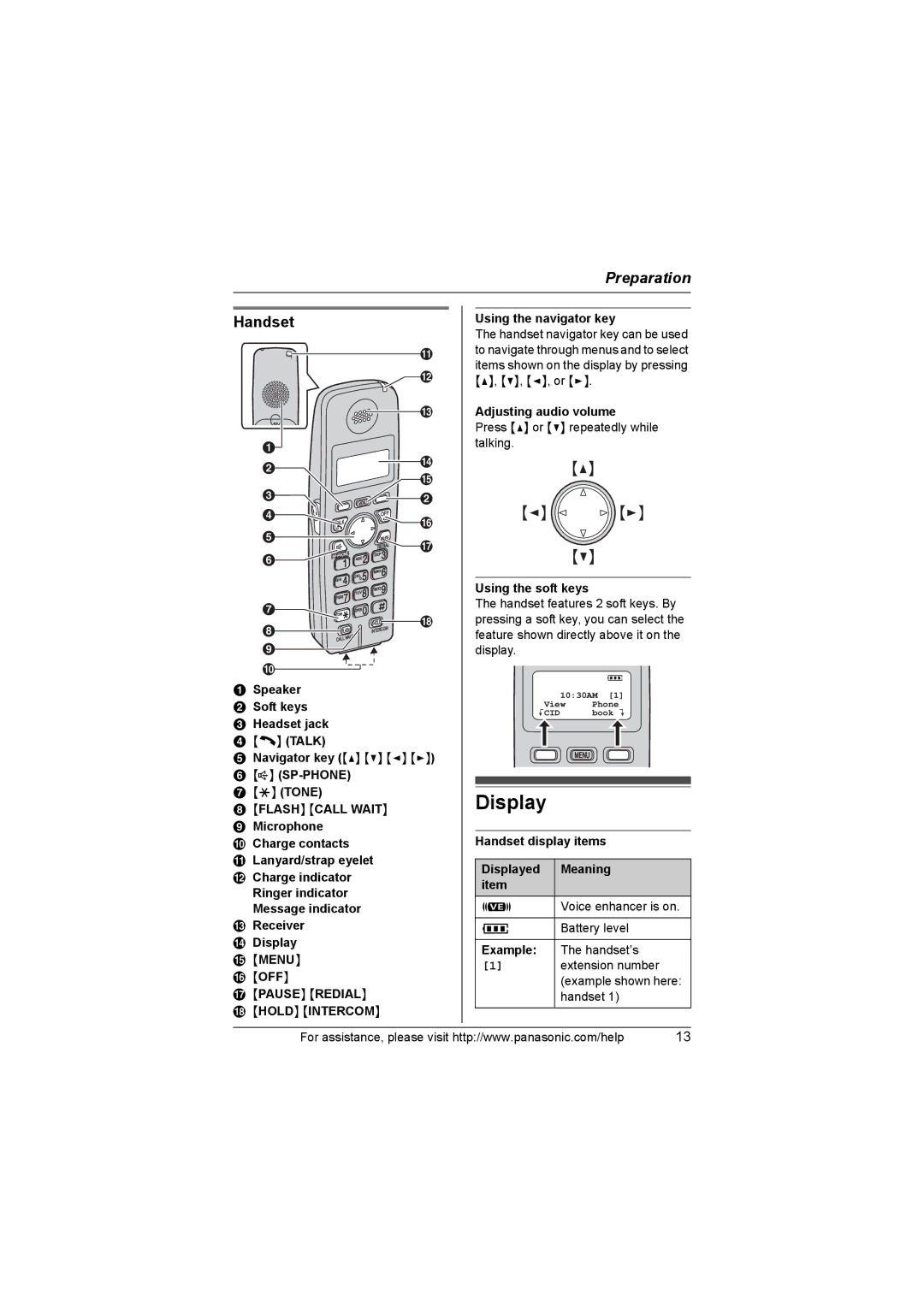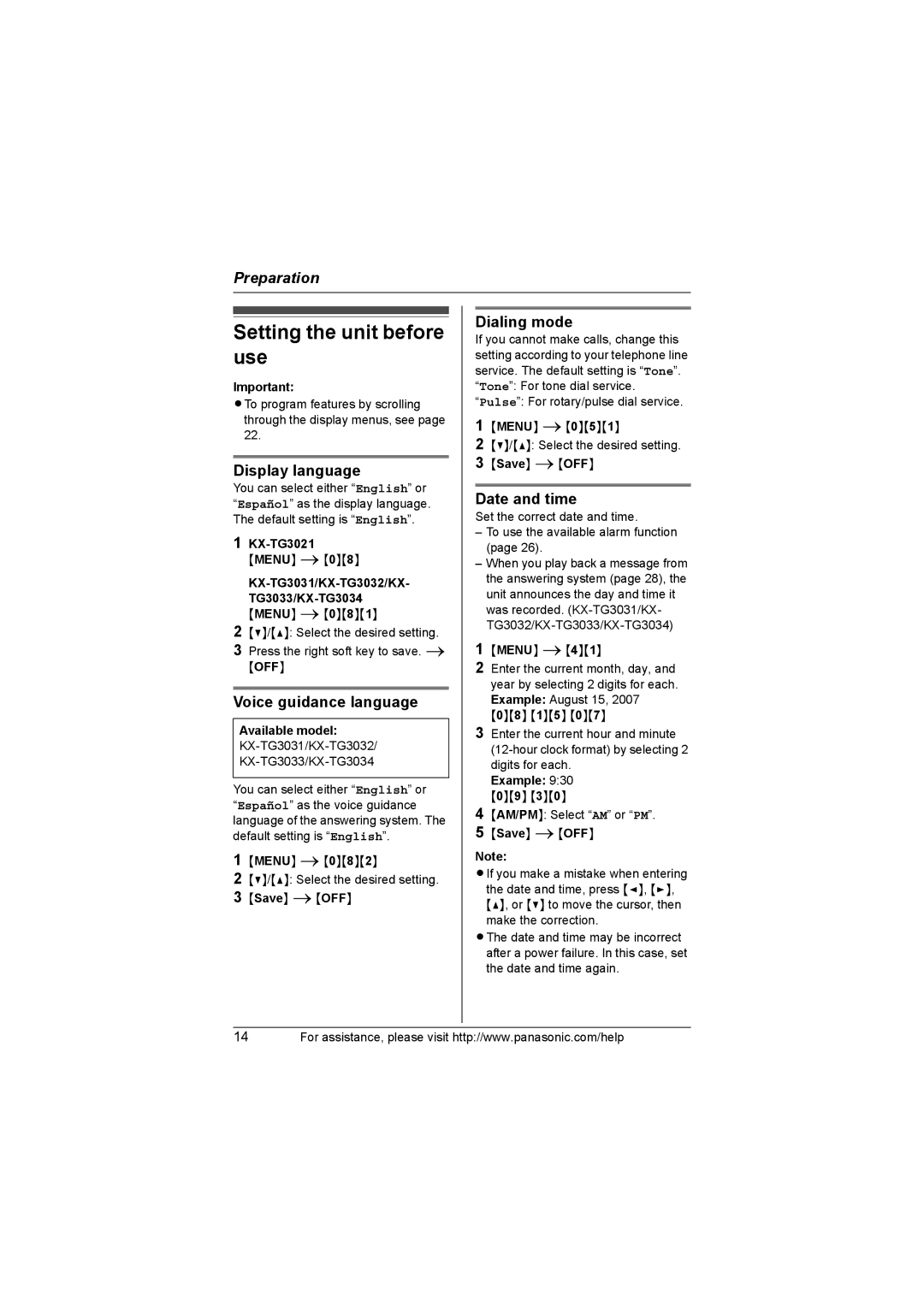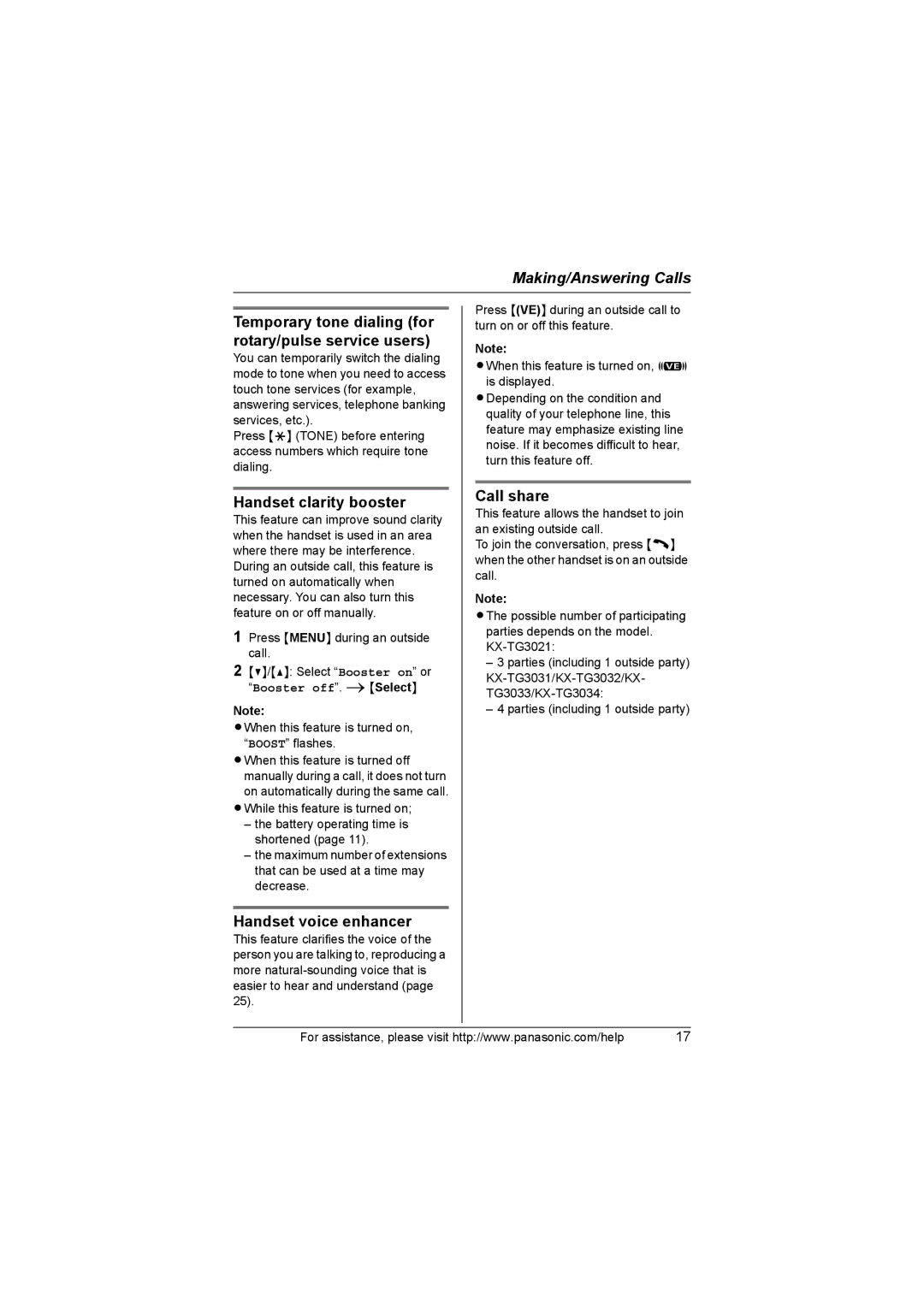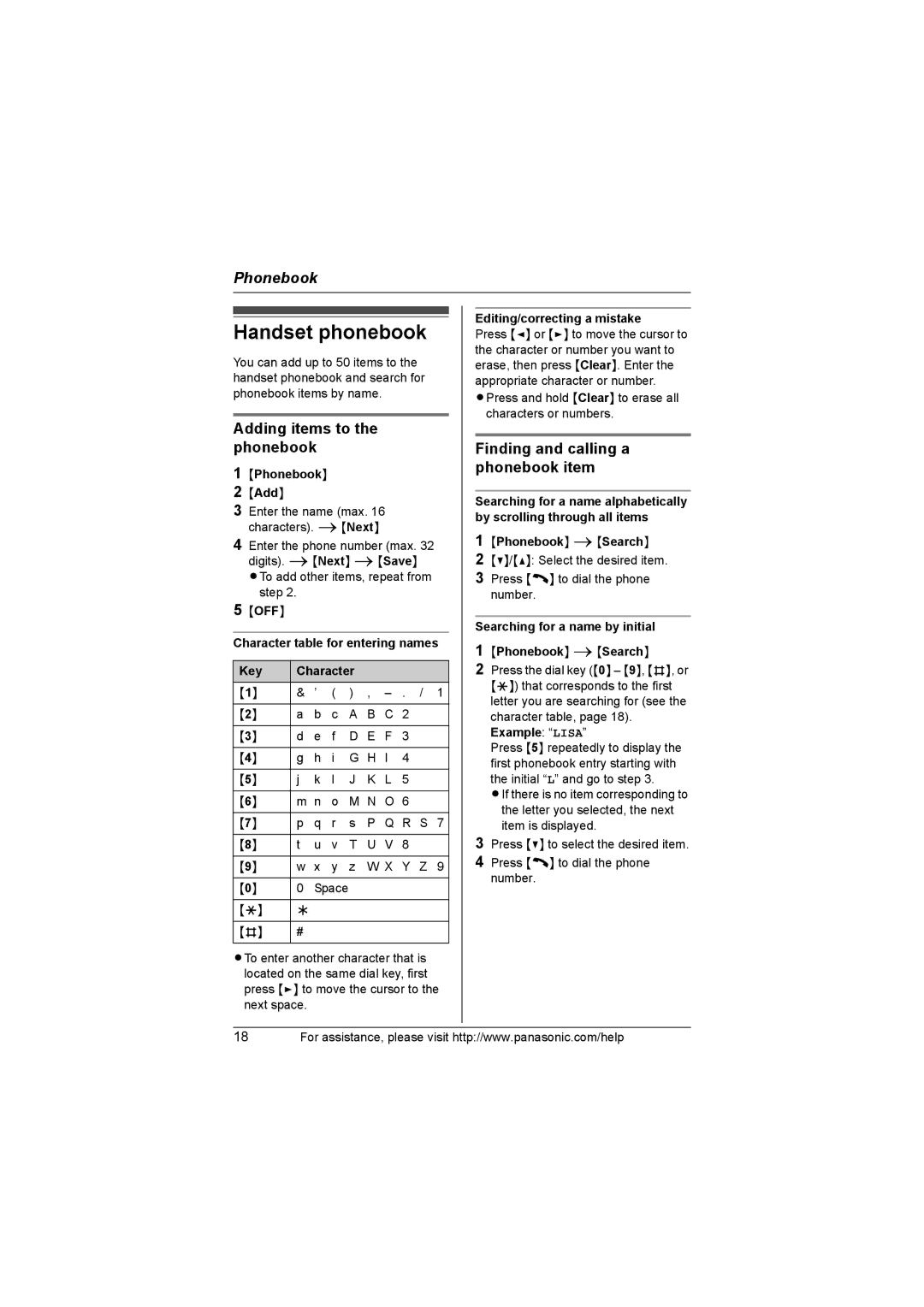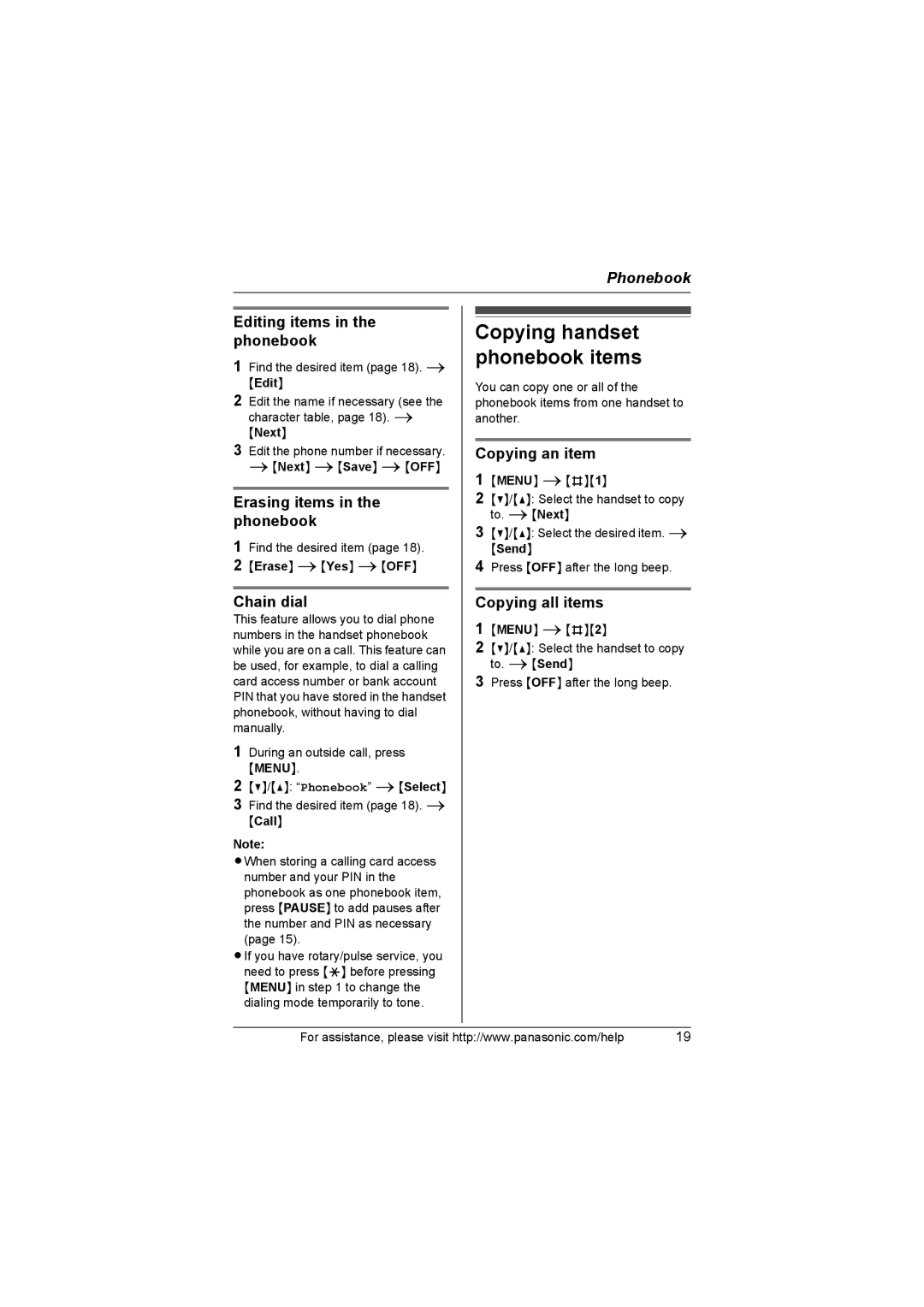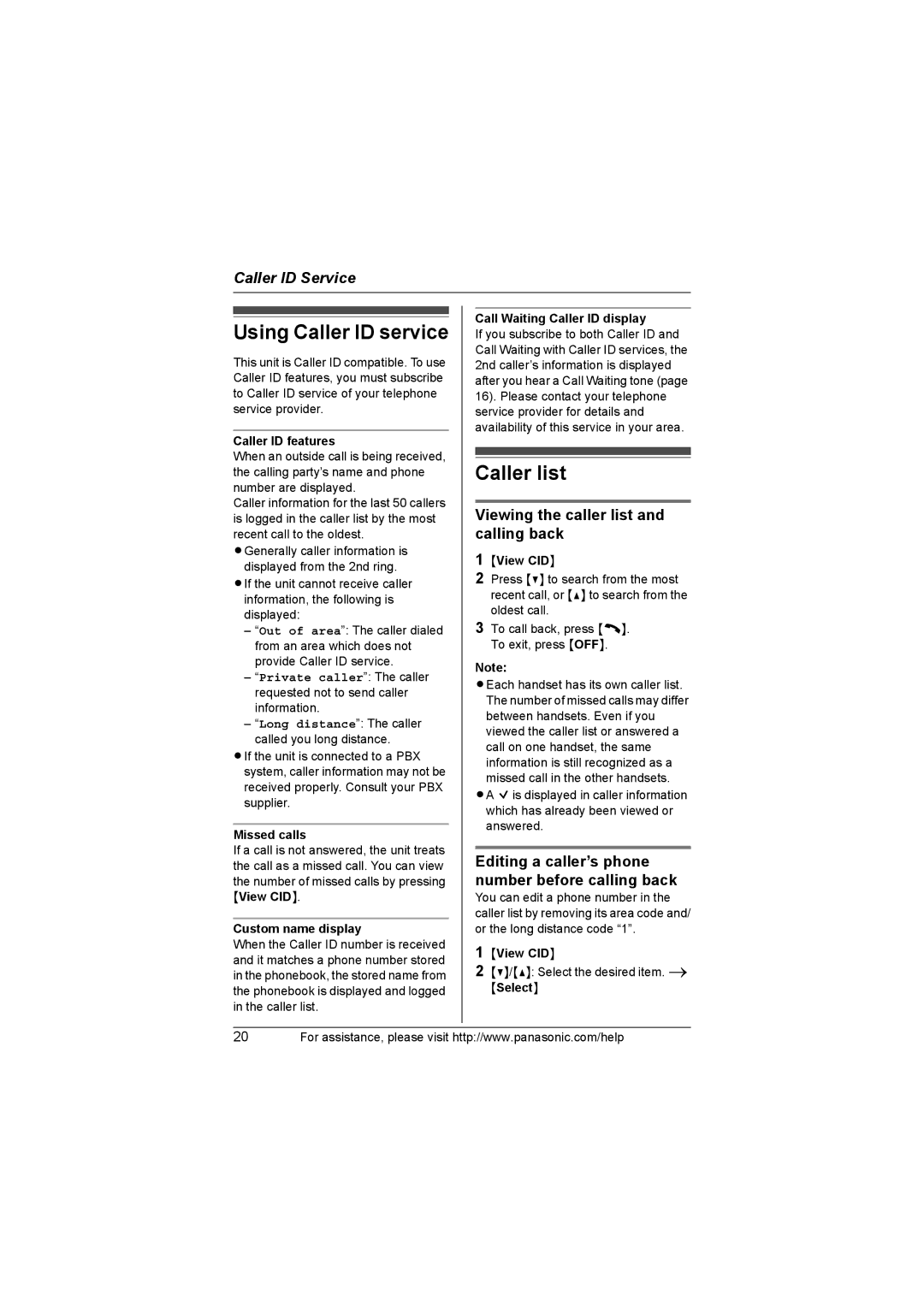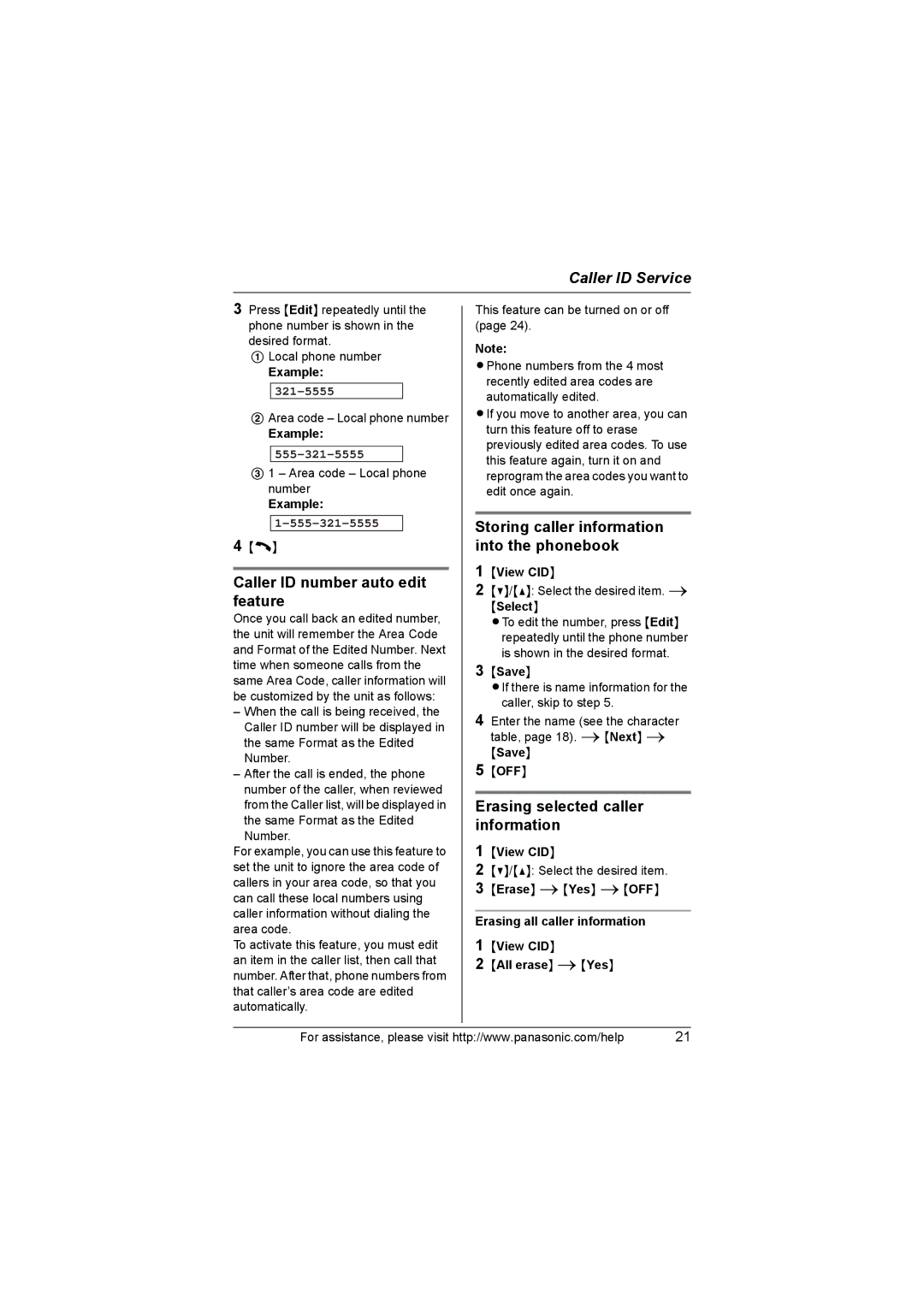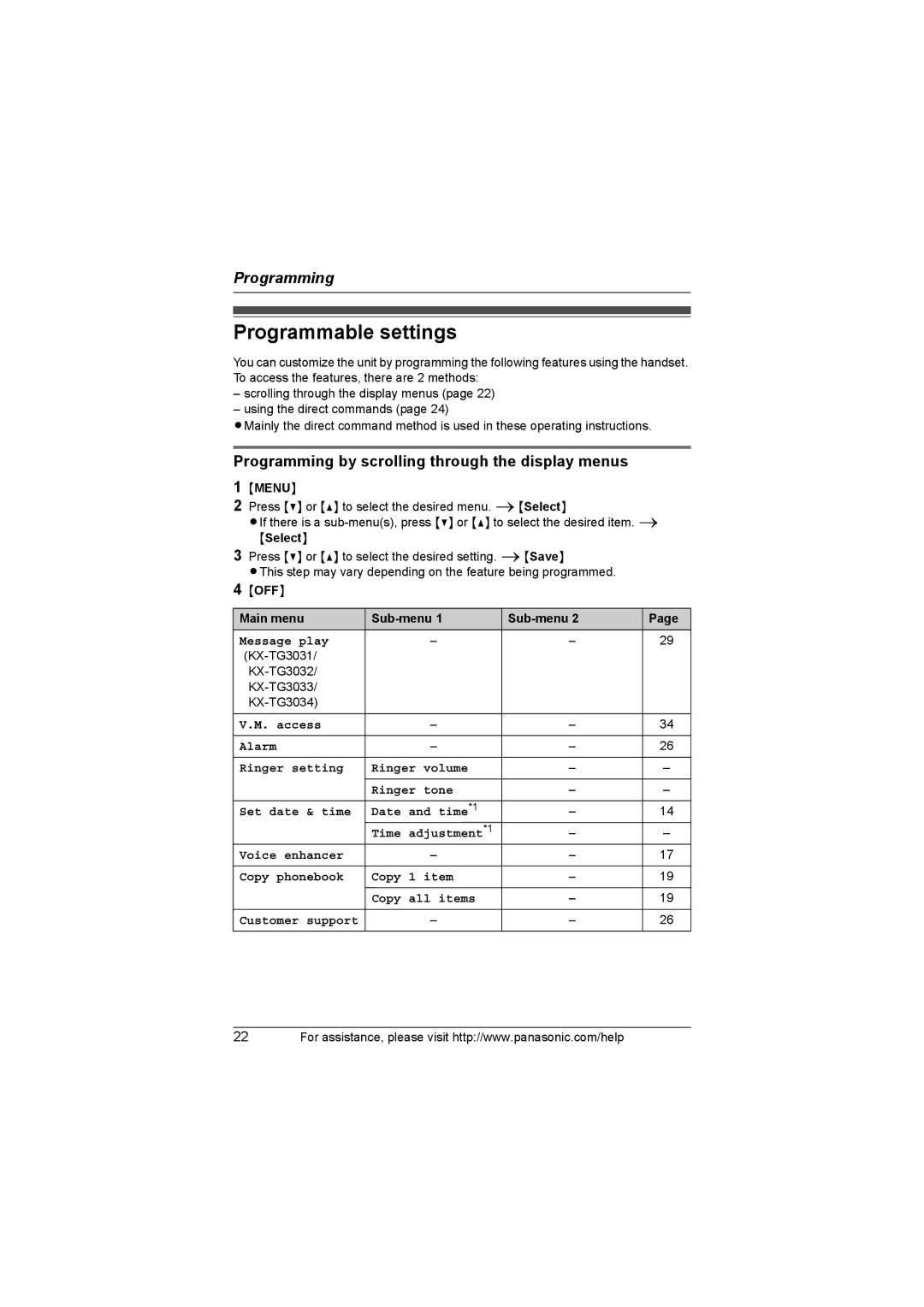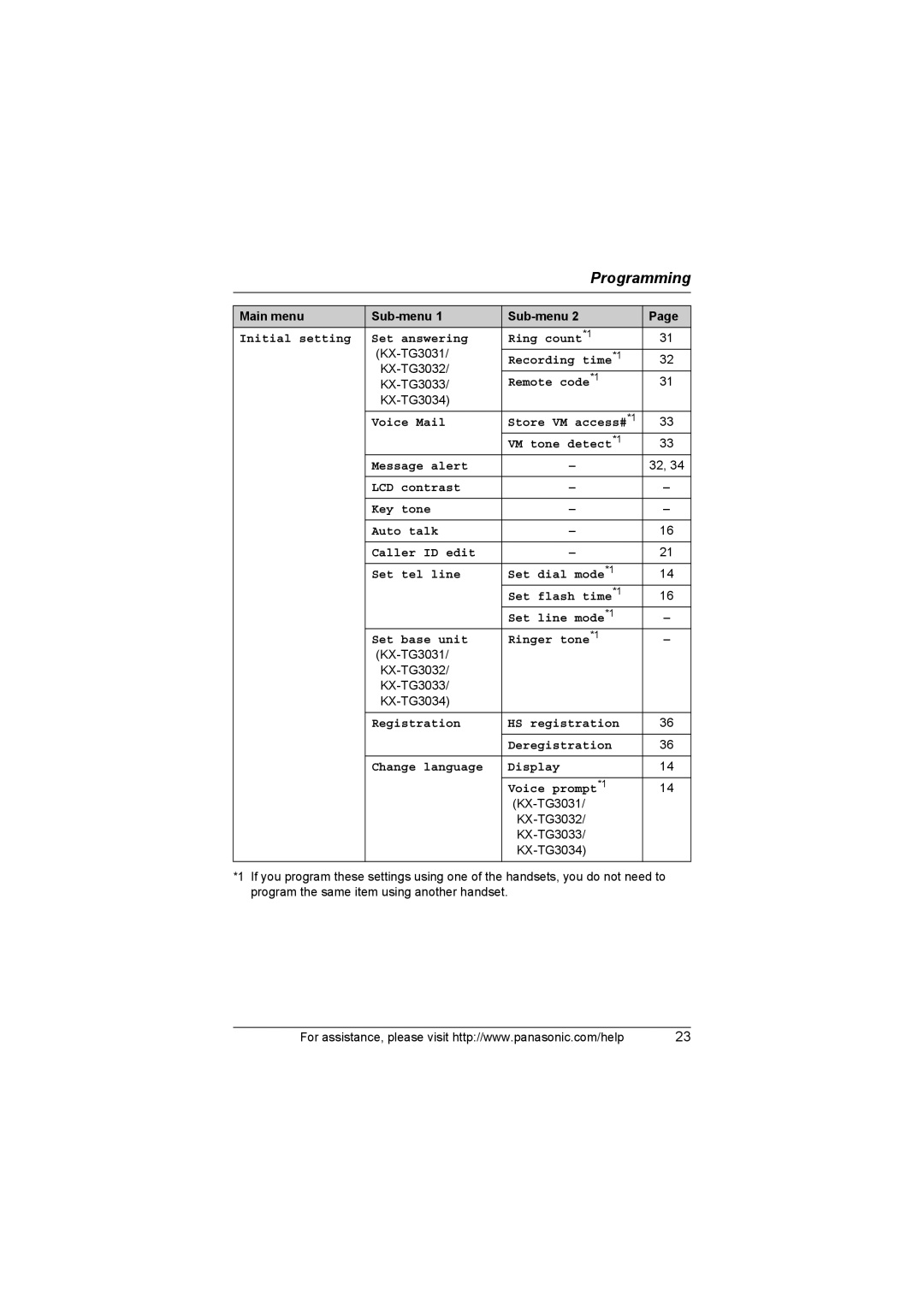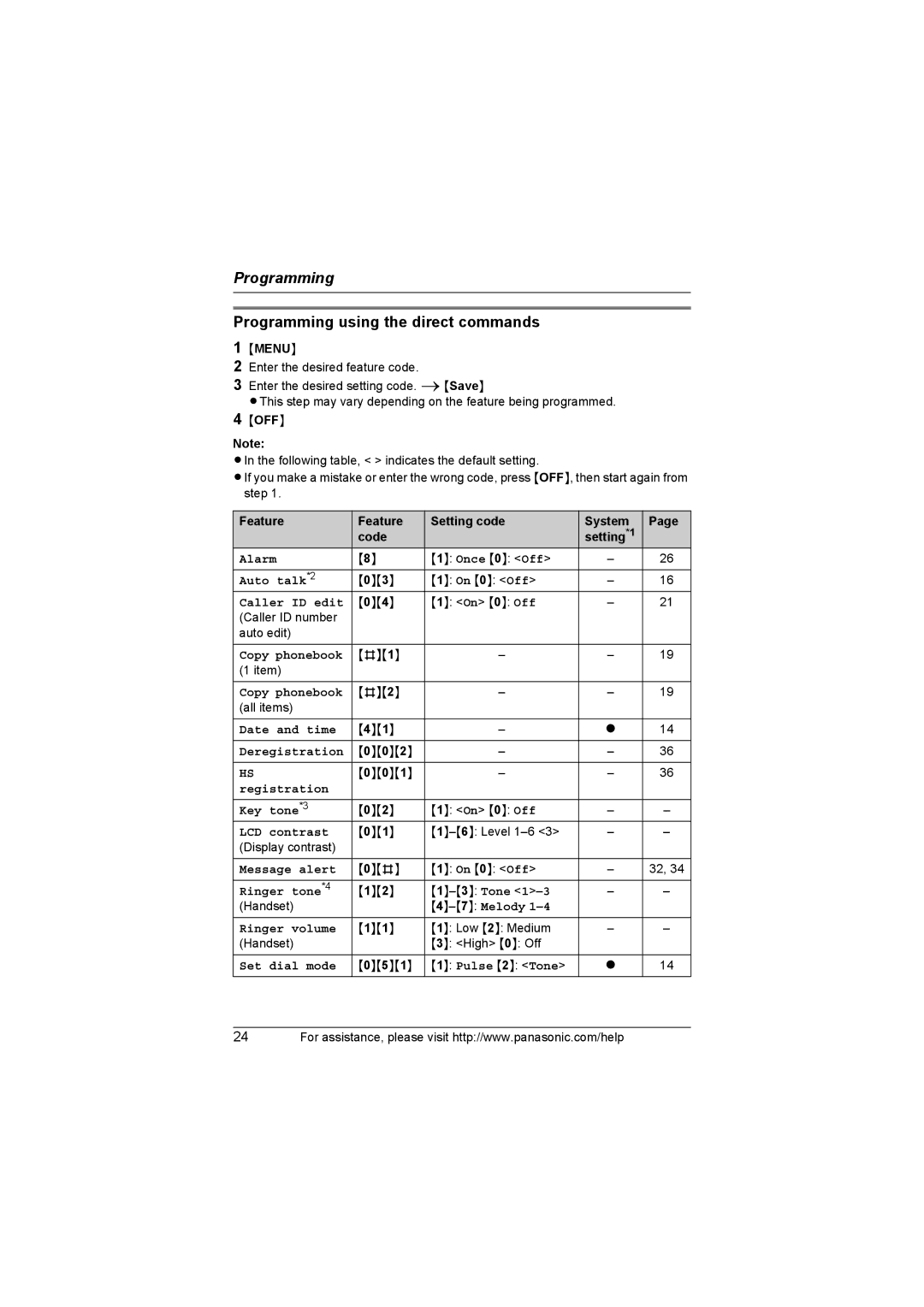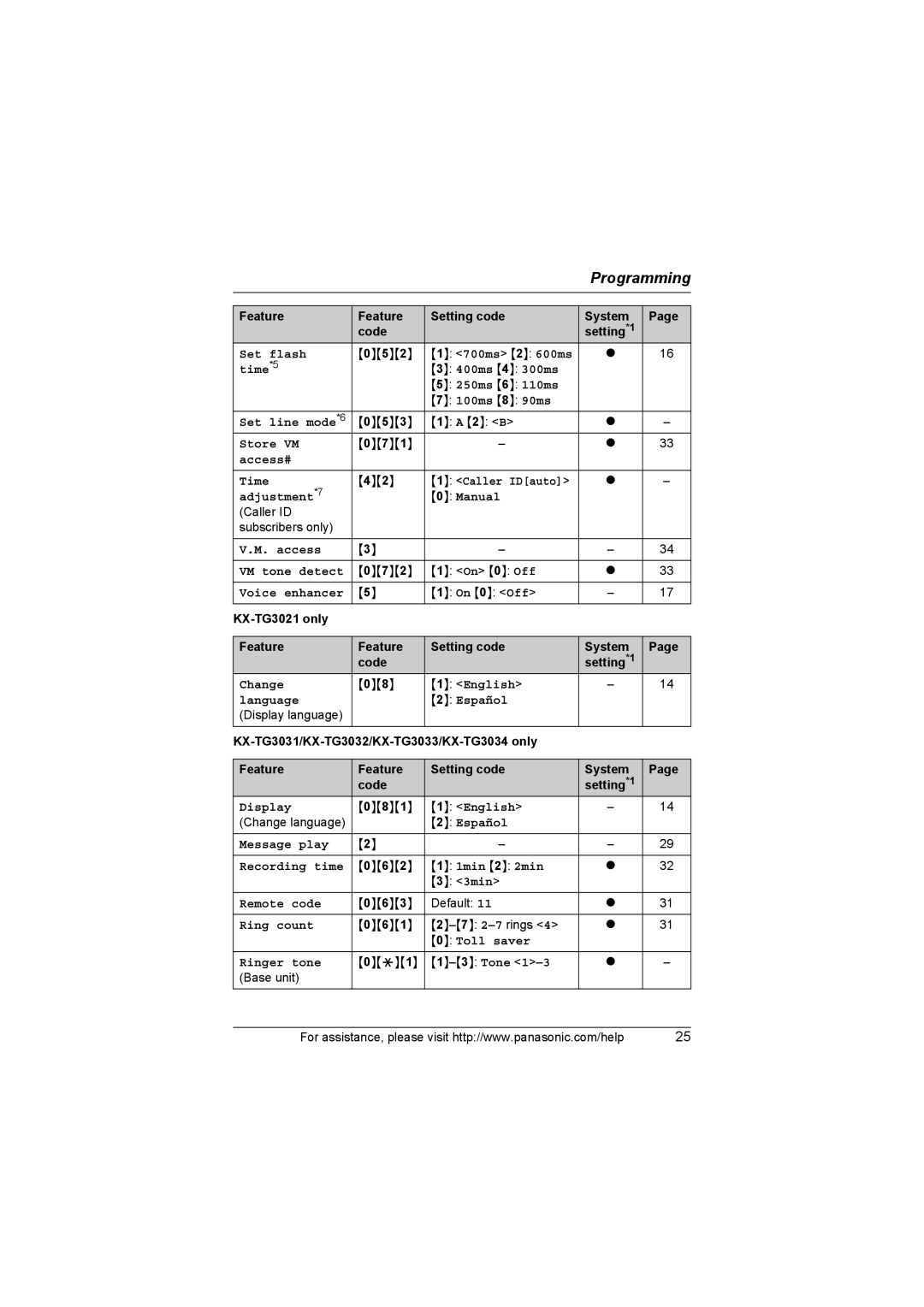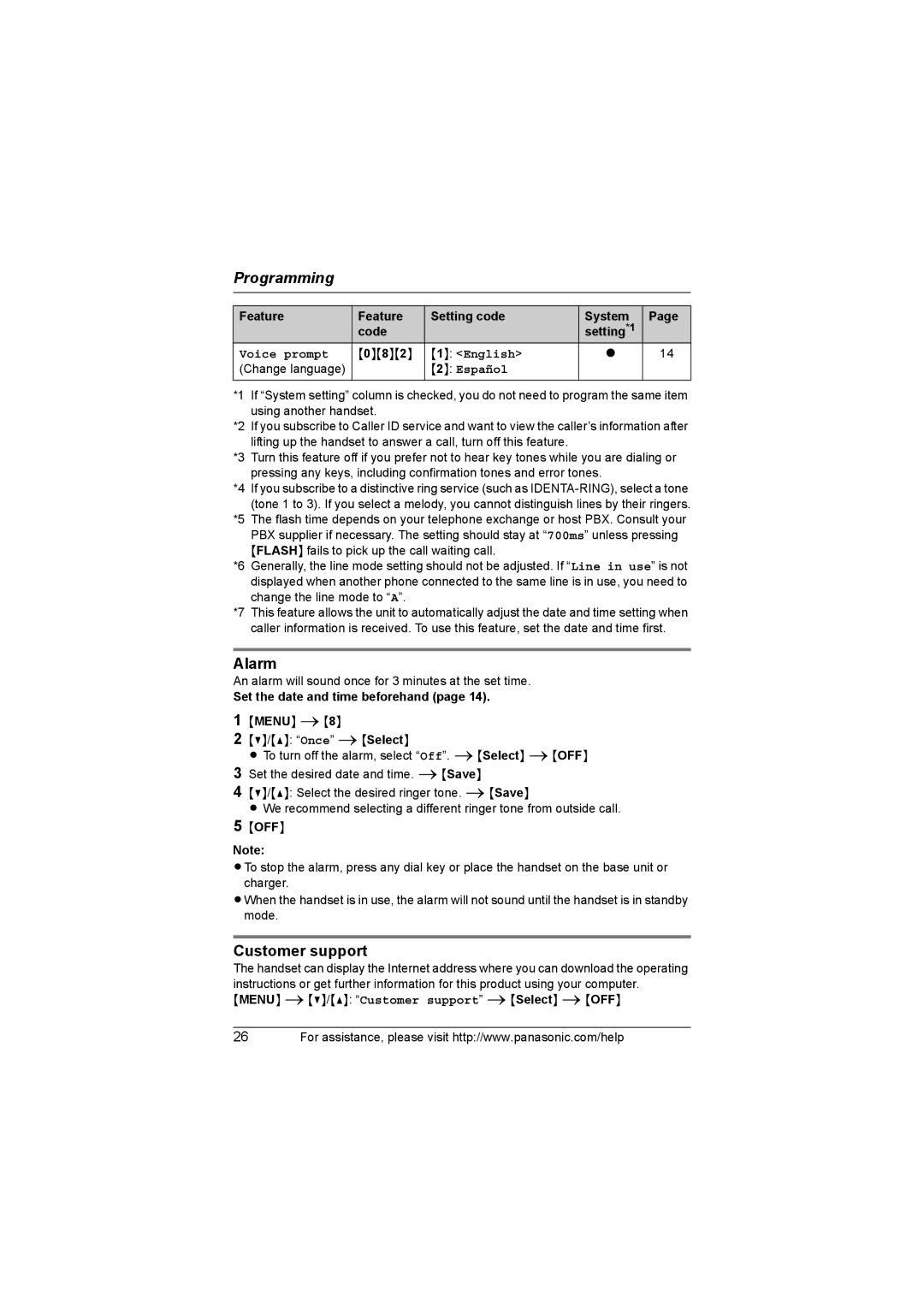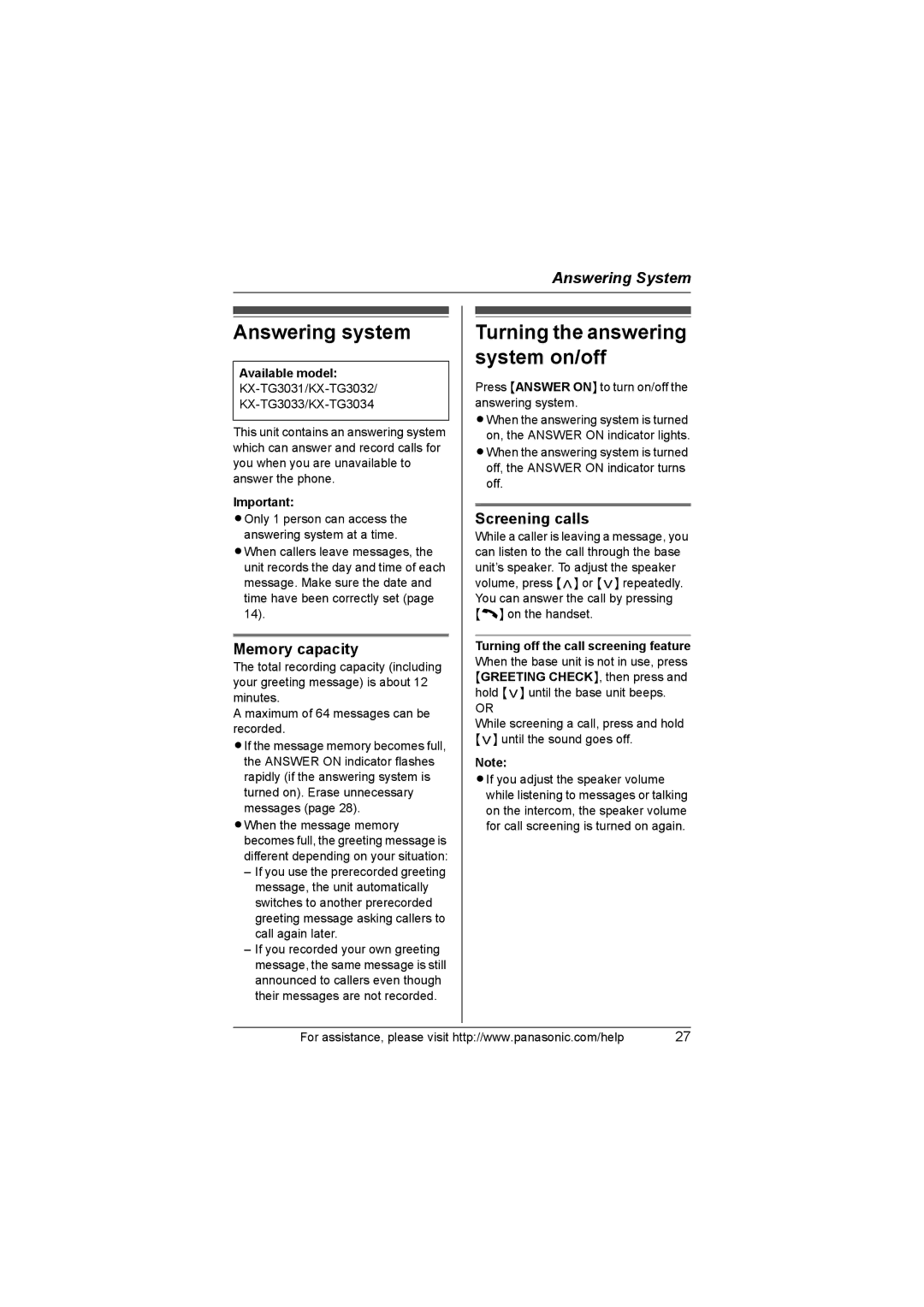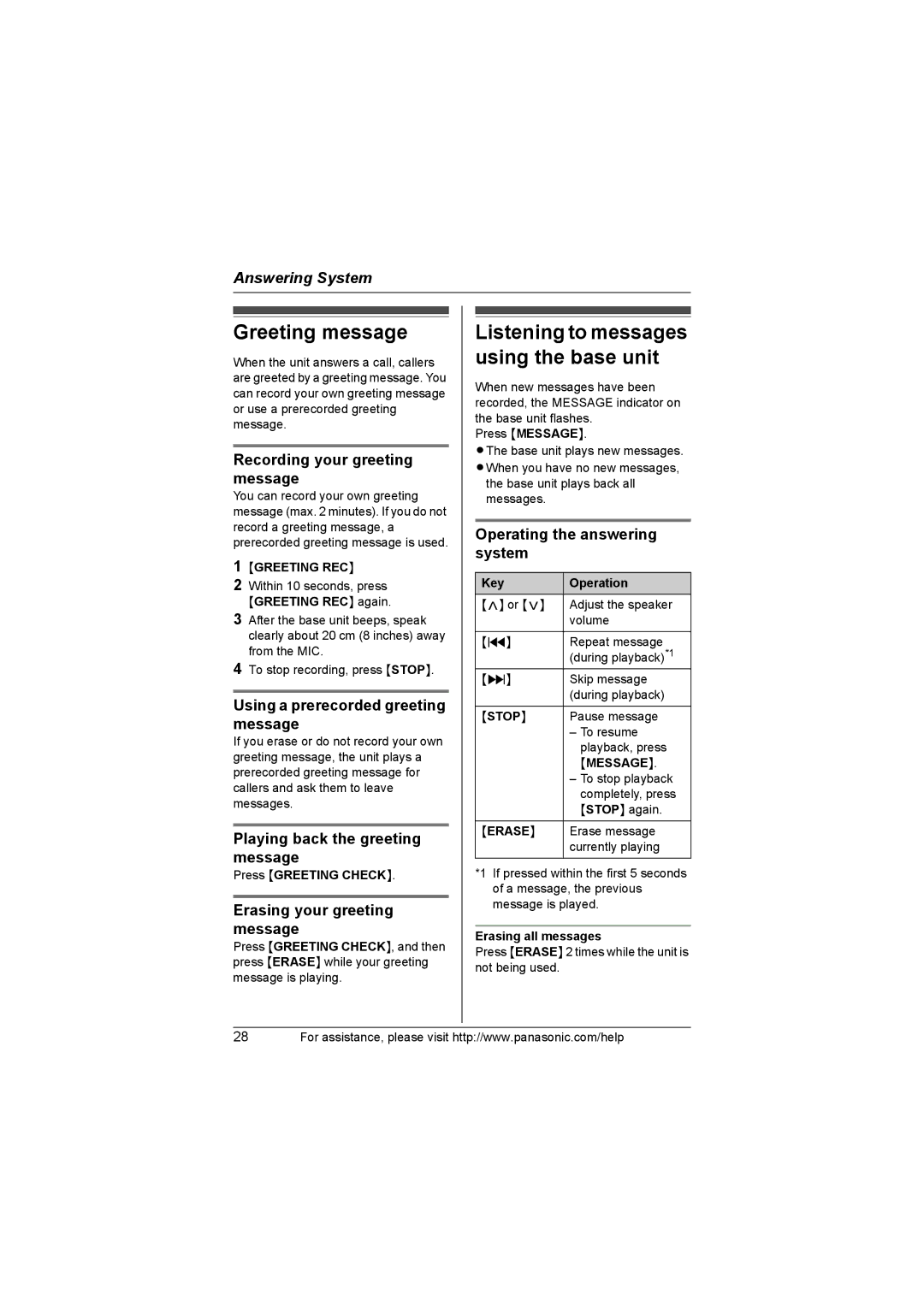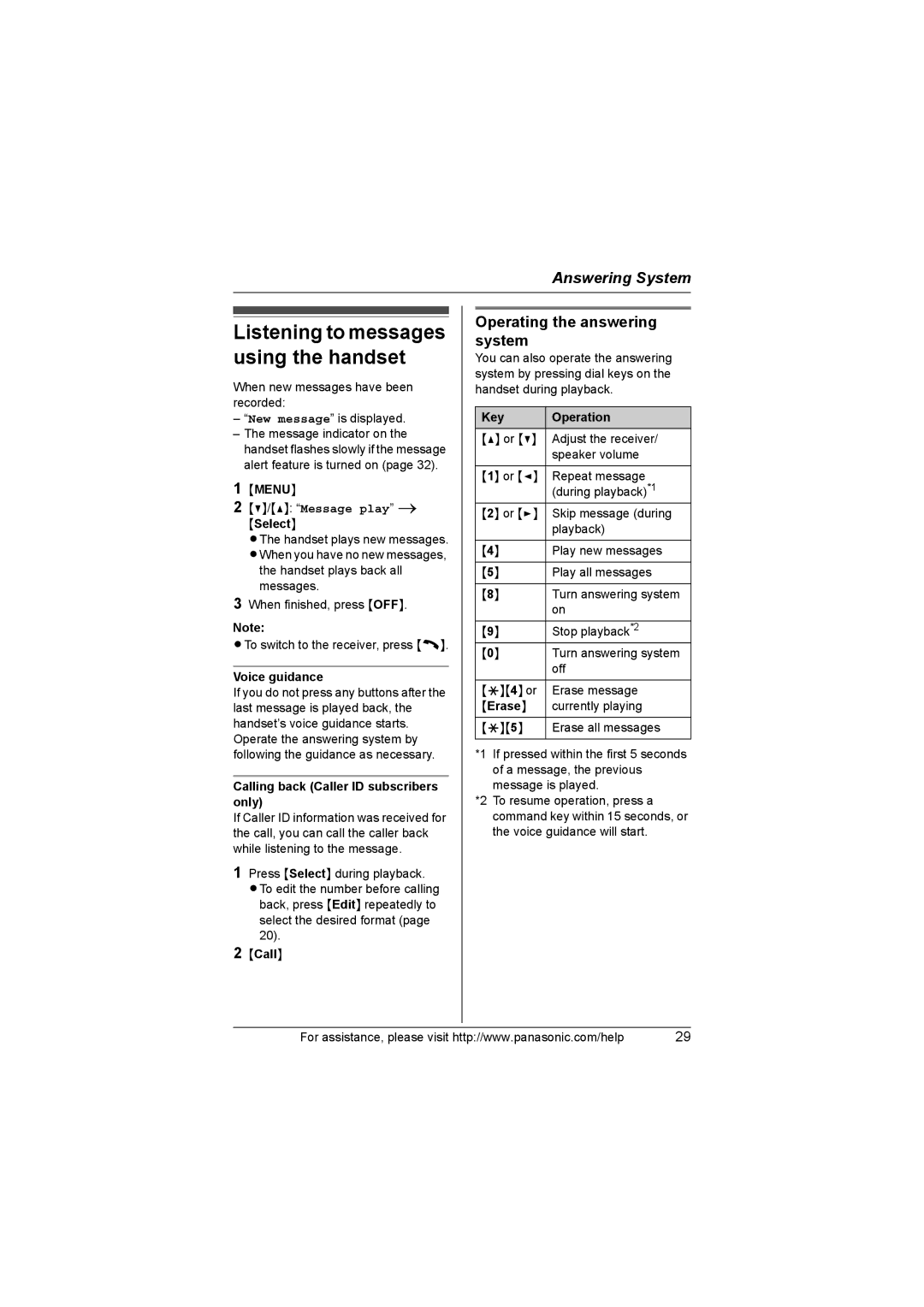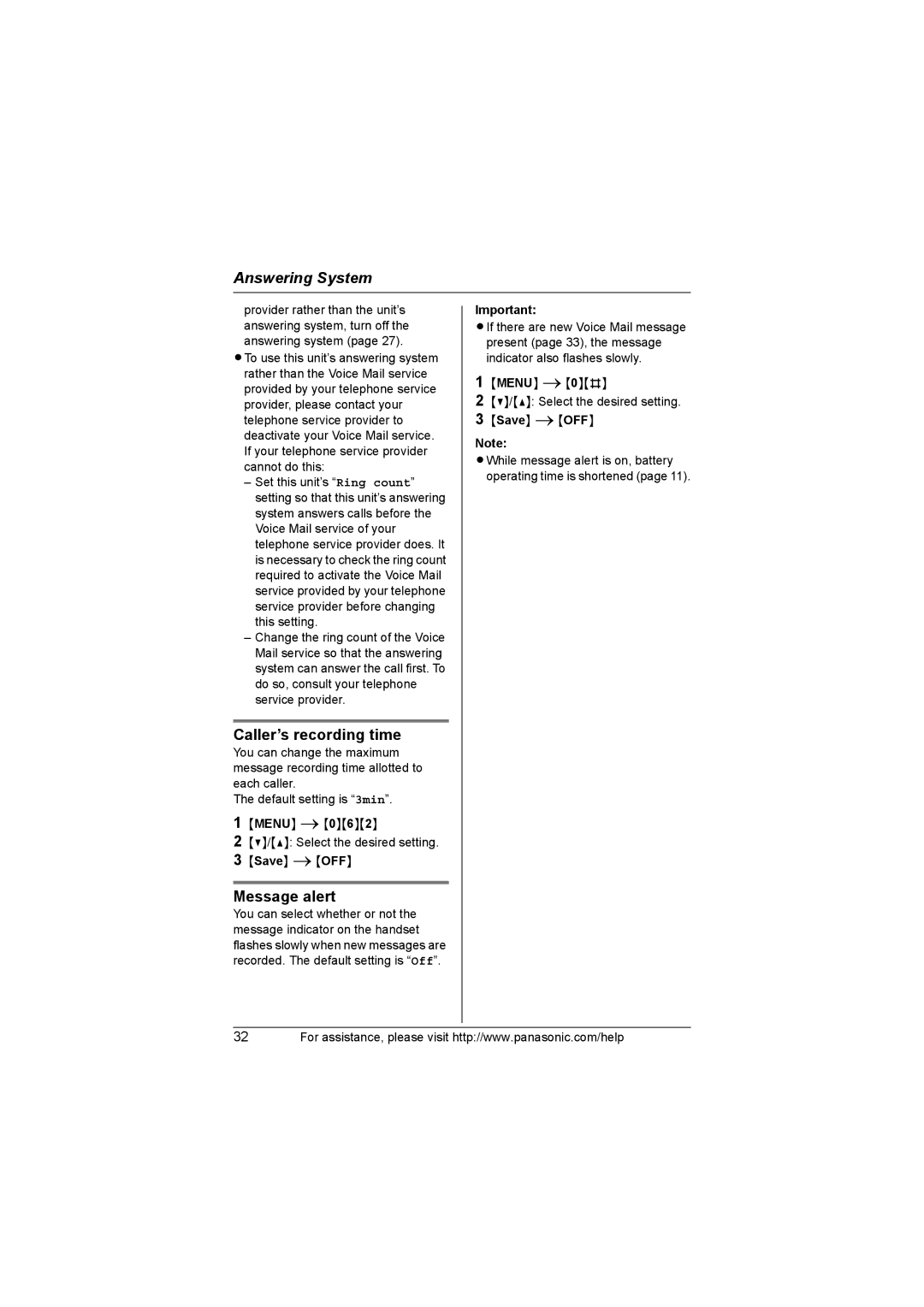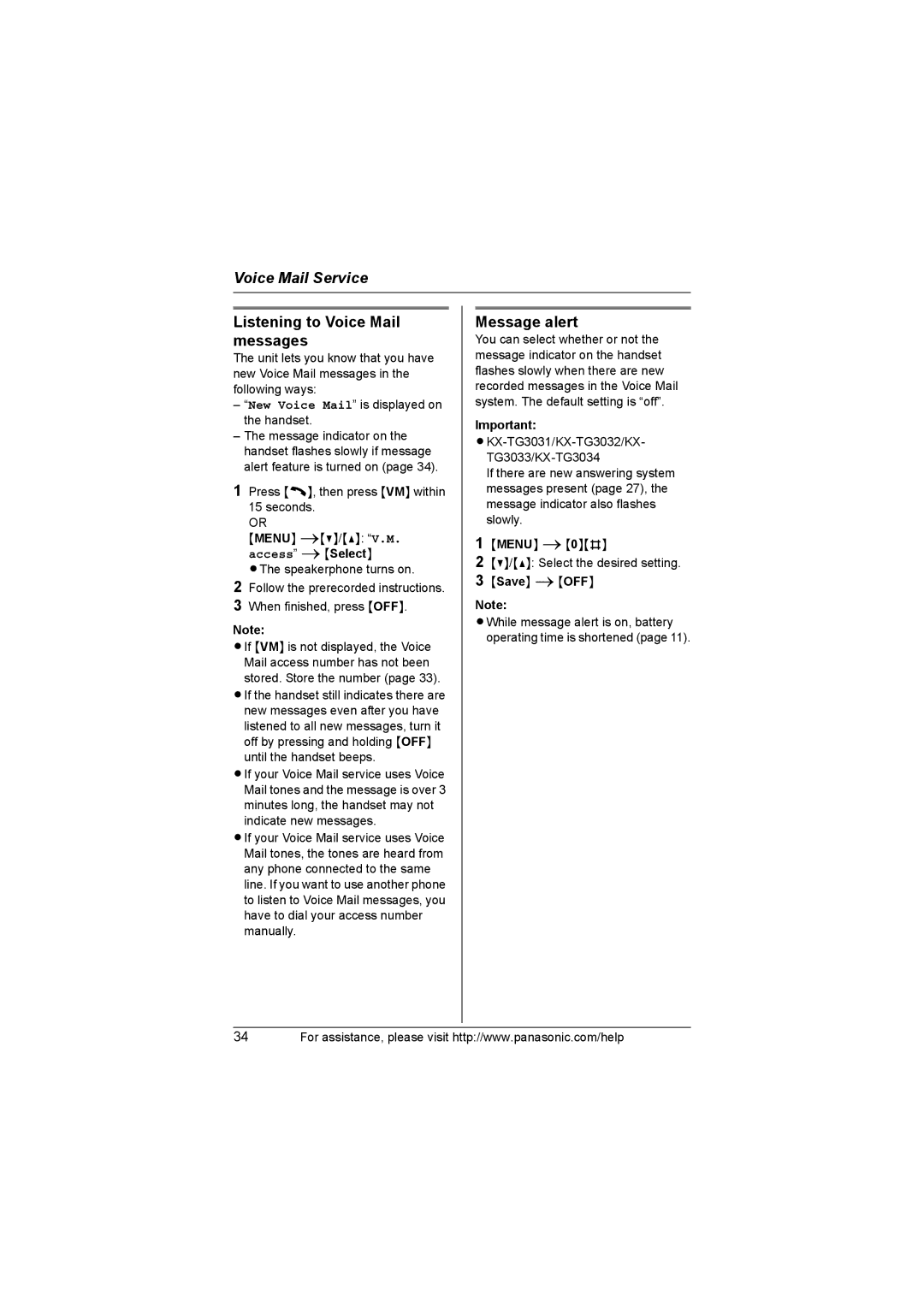
Preparation
Note:
LIf you want to use the handset immediately, charge the battery for at least 15 minutes.
LTo ensure that the battery charges properly, clean the charge contacts of the handset, base unit, and charger with a soft, dry cloth once a month. Clean more often if the unit is subject to the exposure of grease, dust, or high humidity.
LWhen the battery is empty, “Charge for 7h” is displayed and the charge indicator does not light for about 5 minutes to concentrate on charging.
Battery level
Battery icon Battery level
5Fully charged
6Medium
7Low
Flashing: needs to be recharged.
8Empty
Note:
LWhen the battery needs to be charged, the handset beeps intermittently during use.
Panasonic battery performance
Operation | Operating time |
While in use | Up to 5 hours |
(talking) |
|
|
|
While not in use | Up to 11 days |
(standby) |
|
|
|
While using the | Up to 3 hours |
clarity booster |
|
feature (page 17) |
|
|
|
Note:
LBattery operating time may be shortened over time depending on usage conditions and surrounding temperature.
LBattery power is consumed whenever the handset is off the base unit or charger, even when the handset is not in use.
LAfter the handset is fully charged, displaying “Charge completed”, it may be left on the base unit or charger without any ill effect on the battery.
LThe battery level may not be displayed correctly after you replace the battery. In this case, place the handset on the base unit or charger and let it charge for 7 hours.
Symbols used in these operating instructions
Symbol | Meaning |
{ } | The words in the |
Button name/ | brackets indicate |
soft key | button names/soft key |
name | names on the handset |
| and base unit. |
| Example: |
| Unit keys: |
| {C}, {OFF} |
| Soft keys: |
| {View CID}, |
| {Phonebook} |
i | Proceed to the next |
| operation. |
|
|
“ ” | The words in |
Example: | quotations indicate the |
“Alarm” | menu on the display. |
|
|
Example: | Press {V} or {^} to |
{V}/{^}: | select “Off”. |
“Off” |
|
|
|
For assistance, please visit http://www.panasonic.com/help | 11 |
